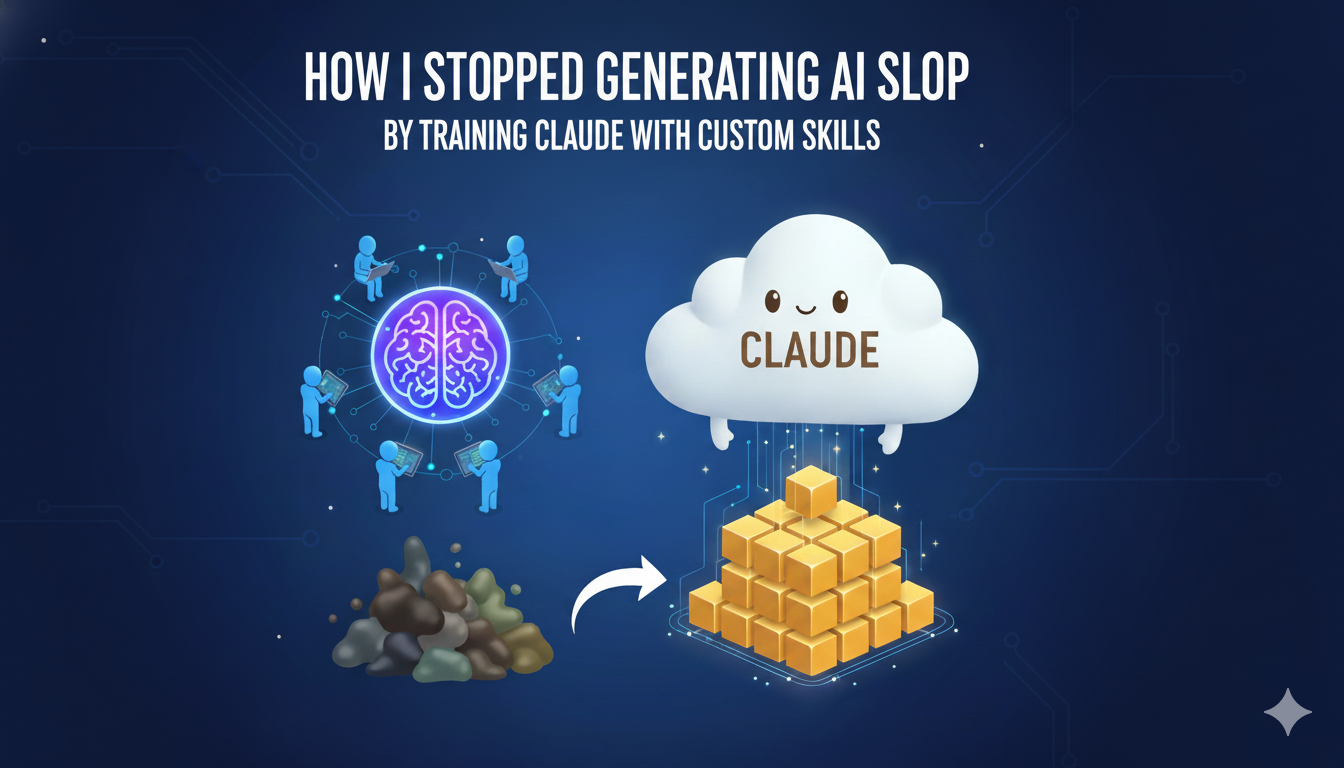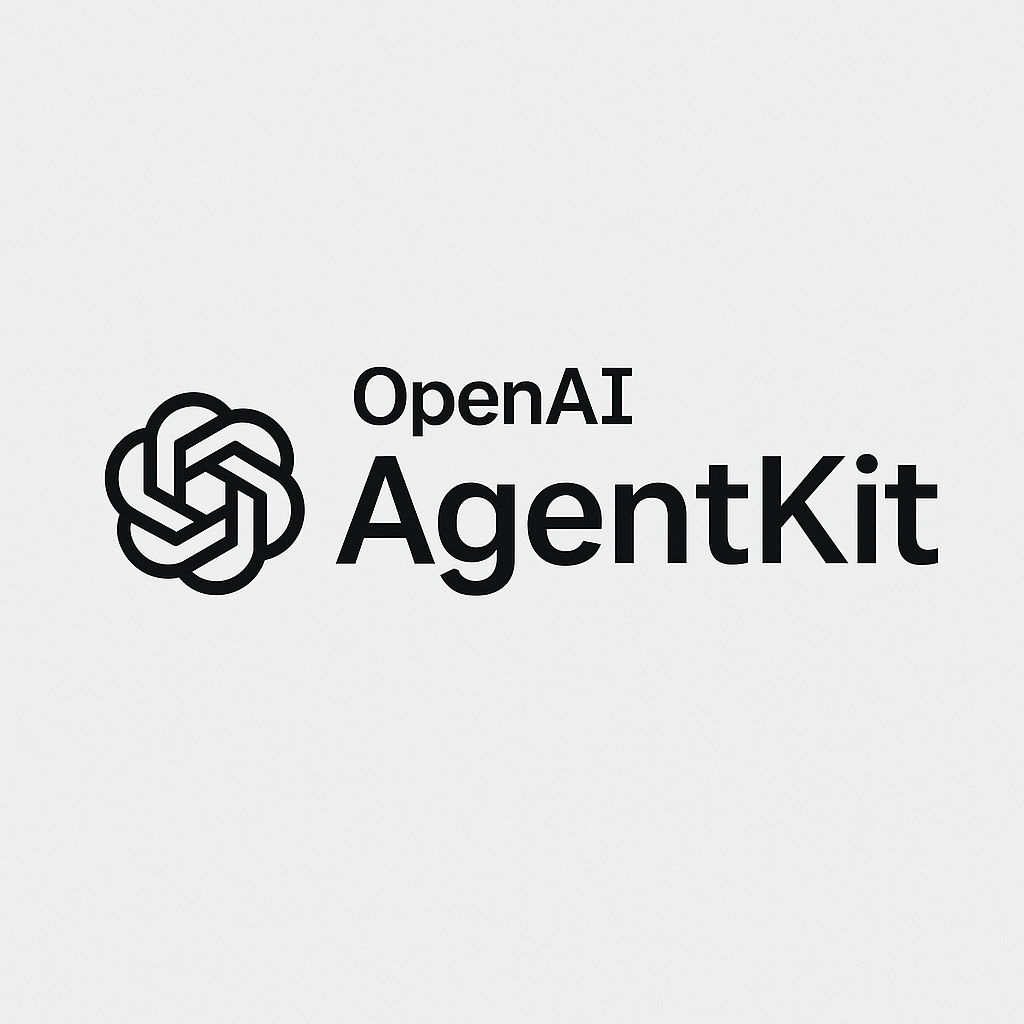How I Stopped Generating AI Slop by Training Claude with Custom Skills
Building reusable "skills" for Claude eliminates repetitive prompting by encoding your style guidelines and standards into instruction files that load automatically. This systematic approach delivers consistent outputs and competitive advantage while competitors waste time with generic prompts.

Key Takeaways
- Organizations report 78% reduction in manual work through structured AI training while custom implementations boost specific workflow productivity by up to 234%
- Consistent AI outputs eliminate rework cycles that slow GTM teams, with structured training delivering measurably better quality than ad hoc prompting
- Companies using generative AI achieve $3.70 ROI for every dollar spent on systematic AI implementation
- AI systems trained with structured instructions complete 12x more multi-step tasks than baseline models using generic prompts
Context
Most executives waste time fighting their AI tools instead of training them properly. They type the same instructions into ChatGPT or Claude every single conversation, hoping for consistent results. They get frustrated when outputs vary wildly. They blame the AI when the real problem is their approach.
I solved this by building custom skills for Claude. Skills are reusable instruction sets that teach Claude exactly how I want work done. Once created, they load automatically when relevant. No more copying instructions from notes. No more inconsistent outputs. No more explaining my writing style, citation format, or content structure every conversation. Claude remembers because I trained it systematically.
Citations
- AI-driven custom training boosts productivity by 234% compared to manual processes (Writer 2025, https://writer.com/blog/roi-for-generative-ai/)
- Companies using generative AI achieve average ROI of $3.70 for every dollar spent on training and implementation (IDC/Microsoft 2024, https://news.microsoft.com/en-xm/2025/01/14/generative-ai-delivering-substantial-roi-to-businesses-integrating-the-technology-across-operations-microsoft-sponsored-idc-report/)
- Organizations report 78% reduction in manual report generation through structured AI training (IBM 2025, https://www.ibm.com/think/insights/ai-roi)
- Custom AI training programs reduce training time by 40% while improving output quality (Training Industry 2025, https://trainingindustry.com/articles/artificial-intelligence/how-ai-is-shaping-the-future-of-corporate-training-in-2025/)
- Agentic AI systems trained with structured instructions complete 12x more multi-step tasks than baseline models (DigitalDefynd 2025, https://digitaldefynd.com/IQ/agentic-ai-statistics/)
What This Means for GTM Leaders
Every time your team asks Claude to write a sales email, create a proposal, or draft customer communications, they're either training the AI or wasting time. Teams that repeat instructions every conversation spend significant time on redundant prompting. Teams that build skills invest upfront to eliminate this waste permanently.
The productivity math is straightforward. If your Demand Gen or RevOps team writes 50 emails weekly and spends 5 minutes per email explaining tone, structure, and requirements, that's 250 minutes wasted on instruction. Build one email skill with those requirements, and your team reclaims that time forever. The skill loads automatically when needed, delivers consistent outputs, and improves through iteration.
Training AI systematically creates competitive advantages. Your competitors copy/paste generic prompts and get generic results. You build skills that encode your company's best practices, style guidelines, and strategic frameworks. Your AI consistently produces work that matches your standards because you trained it to understand what good looks like for your organization.

Point of View
The executives who win with AI train systems. Generic AI is a commodity. Every competitor has access to Claude, ChatGPT, and similar models. The differentiator is training quality. Teams that invest in building reusable skills develop AI capabilities competitors can't match through ad hoc prompting.
Skills transform AI from a tool requiring constant instruction into a trained system that understands your requirements. Writing becomes consistent because your style skill defines voice, structure, and banned phrases. Citations become reliable because your research skill specifies source quality and formatting rules. Outputs become predictable because you encoded expectations once instead of explaining them repeatedly.
This approach scales across organizations. Build skills for proposal writing, competitive analysis, customer communications, internal documentation, and strategic planning. Train once, use everywhere. New team members inherit institutional knowledge through skills rather than learning tribal prompting techniques. Quality stays consistent because skills define standards explicitly.
Making Sense of the Situation
Start by identifying your three highest-volume AI workflows. Sales emails, customer support responses, and content creation typically top the list for GTM teams. Document your current process for each workflow, including every instruction you repeat, every formatting rule, and every quality standard. This documentation becomes your first skill.
Build one skill at a time. Take your sales email workflow and create a skill file that specifies tone, structure, call-to-action format, and prohibited phrases. Test the skill across 20 emails. Measure quality, consistency, and time saved. Refine based on results. Deploy to the full team once the skill delivers reliable outputs. This iterative approach builds confidence while minimizing risk.
Scale systematically across functions. After validating your first skill, identify the next workflow consuming team time. Build, test, refine, deploy. Track productivity gains at each stage. Document which skills deliver the highest ROI to inform future development priorities. Most teams see measurable productivity improvements within 30 days of deploying their first three skills.
Maintain your skills like you maintain documentation. When best practices change, update the relevant skill. When new team members request different formatting, decide whether to modify existing skills or create role-specific versions. Skills require ongoing curation, but updating one file beats retraining every team member on new prompting techniques.
Call to Action
- Identify your three most repetitive AI content workflows (thought leadership blogs, prospecting emails) this week and document every instruction your team currently repeats manually
- Create your first skill file for the workflow consuming the most team time, including specific formatting rules, quality standards, and examples
- Test the skill across 20 uses before team deployment, tracking time saved and output consistency to establish baseline ROI
- Schedule monthly skill reviews to update instructions based on changing requirements and team feedback
- Build a skill library over six months covering your top 15 workflows, measuring cumulative productivity gains across the organization
Related Blogs Post

How to Build an AI Copilot for Demand Generation [2025 Guide]
Step-by-step guide to building an AI copilot for demand generation. Learn which platform to choose, how to set up integrations, and how to automate your demand gen workflow.

AI for B2B Sales Enablement: Complete Guide 2025
Learn how AI transforms B2B sales enablement with tools for call prep, competitive battle cards, and content creation. Includes implementation roadmap and ROI measurement framework.

AI Agents for B2B Marketing: Complete 2025 Guide
Discover how AI agents transform B2B marketing operations. Learn about 8 types of marketing AI agents, real implementation examples, and how to choose the right tools for your team.

OpenAI's AgentKit Proves We're at the Railroad Moment for Software
OpenAI's AgentKit launch proves AI agents are disrupting SaaS. Learn how marketing myopia explains why traditional software companies must redefine their business models or face obsolescence.

OpenAI AgentKit Just Reset AI GTM
OpenAI's AgentKit announcement on October 6, 2025 changed the conversation from "Can AI improve GTM?" to "How fast can you ship production agents?"

From AI Tool Sprawl to Strategic Networks: A Schön-Inspired GTM Framework
Despite 70% AI adoption in GTM workflows, companies struggle with conversions. This framework shows how to move from isolated AI tools to interconnected systems that deliver measurable results.

Power Your AI GTM Strategy by Recording Customer Phone Calls
To build an effective AI-driven Go-To-Market (GTM) strategy, start by recording customer calls.

AI Agent Strategy: Your Guide to GTM Excellence
The go-to-market landscape has fundamentally shifted. Today's top-performing organizations are leveraging AI agents to create competitive advantages, achieving outcomes to impact time savings per rep, increasing account coverage, and pipeline.

Signal-Based GTM: Key Insights from Clay's Sculpt 2025 in San Francisco
The AI hype in sales is settling into practical results. Companies are saving reps 10+ hours per week, hitting 72% account coverage instead of 19%, and building entirely new roles to make it happen.



